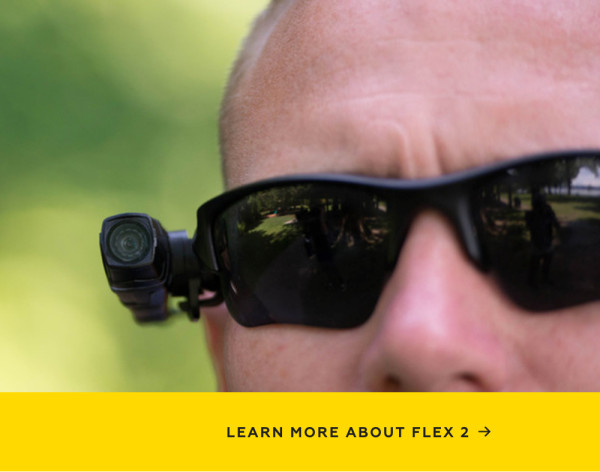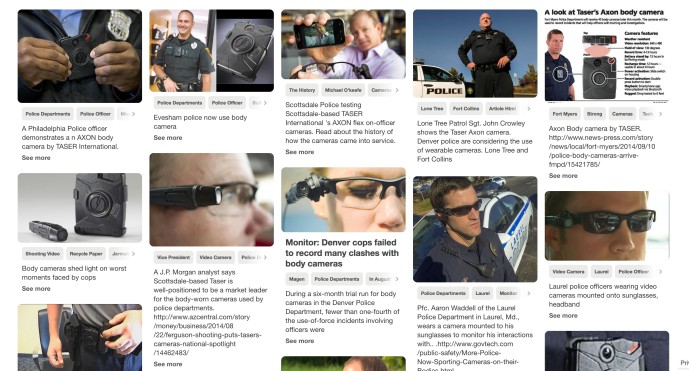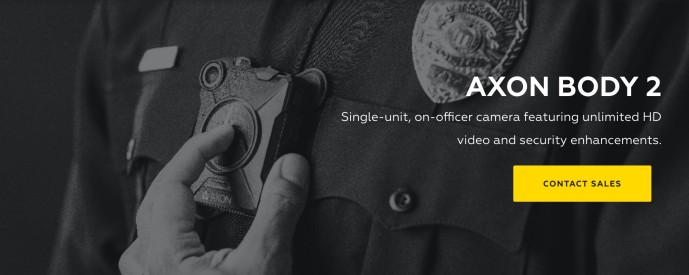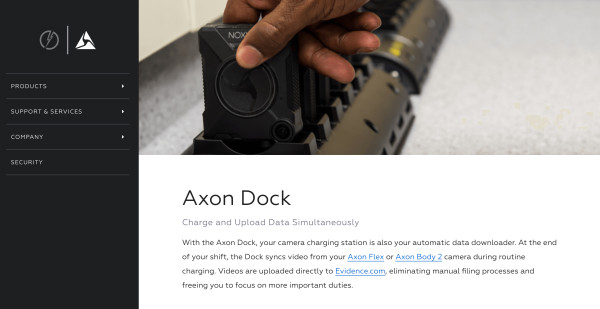Smile, You’re on a Police Body-Worn Camera
The advent of mass, filmed surveillance of public spaces might look like an unalloyed great idea to fans of police “reality” television shows. But it’s problematic in various ways. Among key challenges is to design and manage large, expensive, and vast archives of video footage — including, now, more and more of it from the body-worn cameras that police forces are adopting.
n
by Peter Monaghan
If you get robbed in a well-traveled area of any major or medium-sized city in the western world, chances are that the assault will be captured by closed-circuit-television cameras. The images, even though often of oddly poor quality, may even lead to the return of your property, and the salving of your indignation. They may also solve murders, thwart plots… There’s no denying that they have transformed public space.
Citizens of major cities are filmed by security cameras dozens of times every day – as they go about town, attend events, work, stroll through parks… London, for example, has an estimated 422,000 such cameras, about one per every 14 residents; Great Britain has some 6 million CCTV cameras in operation. Increasingly, public and private cameras are being linked, and tracking of individuals from one to another is, because technologically possible, increasing. Citizens are raised to expect it: virtually all English schools have CCTV systems at a saturation level, and about one half of the schools take and use students’ fingerprints or other biometric data not only for security but for such everyday functions as facilitating payments for school lunches.
A multibillion-pound industry is happy to tell you why you should be afraid of anything less than blanket surveilliance. Companies may well give you a deal on cameras or their installation, because then you’ll need an ongoing service contract, including storage of imagery for whatever length of time, at recurring and considerable expense.
A security rationale has driven municipalities to install surveillance devices all over the place – in city streets, shopping areas, public toilets, and office buildings, and also around entrances to schools as well as within classrooms, and along school corridors, and in playgrounds. Better safe than sorry, is the maxim and sales pitch. Companies such as “smart weapons” manufacturer Taser that vend security systems to schools, as to municipalities large and small, are onto a lucrative thing. They don’t need to talk about the ineffectuality of the systems to stop any attacks by disgrunted and heavily armed fellow students or other crazed assassins; instead, their pitches need only allude to a specter: the reality that major attacks do, rarely, occur, and lesser ones, sometimes.
Tell your kids: Smile, you’re on candid camera behind the bike sheds as you sneak a smoke or snog your first actionable crush.
Drone surveillance may be next — well, it will be. Start training your drone-attack eagle, today. Unless, of course, you’re among the millions who for many years have wanted more cameras, not fewer.
body-worn cameras – surveillance solution du jour
At the moment, the surveillance solution du jour is the “body-worn camera.” Across the United States, as in many other countries, police chiefs and politicians invoke variants of the security theme to support the notion that police officers should wear cameras that record their interactions with members of the public. In the United States, even many civil libertarians have joined the call for adoption of the devices, following numerous police shootings of unarmed civilians, most of them African American.
Former President Barack Obama’s community-policing strategy included substantial investment in body-worn cameras for police officers; presumably Donald Trump, who has already begun to relax federal oversight of state and local police-force operations, will double down on such measures. He is also likely to go further than Barack Obama, whose advocacy and budgeting included providing many millions of dollars in federal grants to underwrite the costs of cameras and storage of their imagery.
The Obama Administration premised its support of that approach on claims that “body worn cameras help strengthen accountability and transparency, and that officers and civilians both act in a more positive manner when they’re aware that a camera is present.”
Those appealing notions are hardly as self-evident as has been claimed.
The Obama Administration’s grants, though budgetarily tiny, were a rousing boost for the technology. They contributed to a philosophy of policing that remains as infatuating for many law makers and enforcers as Jeremy Bentham hoped it would be in the late-18th century when he proposed the panopticon – a prison design that permitted a few guards to constantly monitor all inmates from a central viewing post. His intention was to create a more humane alternative to England’s prevailing methods of imprisonment and punishment. The concept hinged on prisoners being visible to guards, at any time, but unable ever to be sure whether guards were watching them.
The panopticon was never fully implemented, anywhere, but soon may be, in modern form, because it remains an attractive concept for people charged with controlling the rest of us.
Body-worn cameras are part of an arsenal of modern-day surveillance tools that supercharge the mechanism that Bentham thought the panopticon could be: now, whether or not citizens know that they are being watched by surveillance cameras in public places, or on dashboards of police vehicles, or on police officers’ bodies, footage can be stored and viewed later. Or, it can be linked, in real time, with facial-recognition, car-number-plate recognition, or similar systems.
Public and body-worn cameras fit into a large context of modern-day policing. At a time when budgets for just about all civic services are shrinking, states and municipalities are equipping police forces, particularly urban ones, but also rural and even campus squads, with heavy-duty armaments including surplus military equipment such as high-powered weapons and mighty tactical vehicles. The Obama Administration cited, as one rationale for that transfer, “the relative ease with which some criminals are able to obtain high-powered weapons.” Reversing his earlier call for restrictions on gun ownership, Donald Trump has just promised the National Rifle Association’s membership that he will do nothing to suppress that availability.
Substantial gun control seems unlikely ever to come into force in the United States — how many people would need to be shot, in one single incident, for that to happen; several million? Far more likely is thorough monitoring and policing of individuals within a general population who are or are not suspected of crimes, and of individuals within demographic groups designated as inherently criminal.
What makes wearable cameras stand out in the expanding police arsenal is that they shoot from right in the face of civilians in public places and in homes. Many police officers say that that worries them; they fear that body-worn cameras compromise good relations that most have with citizenries, including their allies in communities – business owners who help them monitor the streets, witnesses who may worry about leaks of their identities, informants. Police officers and commanders also worry that people they arrest will be hesitant to turn over information while cameras are running (while, presumably, apprehended individuals may hesitate not to, when they’re not).
Such hesitations may slow adoptions, but show no signing of stopping them. They are proceeding rapidly, on both political and cultural traction.
The political momentum behind body-worn cameras is such that civil-liberties organizations express measured support for the technology, as long as a variety of features are activated. The American Civil Liberties Union has prefaced its support for body-worn cameras on officers being required to record all interactions with the public — stops, frisks, interviews and searches consensual and nonconsensual, arrests, enforcement actions of all kinds. The ACLU suggests that the technology could be fitted with automated triggering based on, for example, detection of raised voices or certain types of movements, just as police dashcams can be set to switch on in concert with police sirens or lights.
Other organizations keeping an eye on developments in the adoption of body-worn cameras include Reporters Committee on Freedom of the Press (RCFP) which publishes a “policy map” of state and local laws around surveillance-camera use; Access to Police Body-Worn Camera Video; the Police Executive Research Forum (PERF); and WITNESS, which issues ethical guidelines for video-camera deployment.
In addition to political – and technological — momentum, a cultural moment is in play, too. How else to explain that in 2014 the Los Angeles Police Department, which had struggled for 25 years to equip just one-quarter of its squad cars with dashboard cameras, obtained $1.3-million in funding for a body-camera pilot project from such figures as film director and producer Steven Spielberg, entertainment billionaire Philip Anschutz, and now-former DreamWorks Animation CEO Jeffrey Katzenberg?
implementation: a complicated matter
Police departments and municipalities that adopt police body cameras take on complex challenges if they are to ensure smooth implementation. Ideally, when taking on the technology, they balance the interests and gauge the self-interests of a wide variety of parties: members of the public, archivists with experience of vast databases, and many others. To advance the cause of dialog among those various parties, the University of California’s Department of Information Studies convened, in August 2016, a three-day national meeting, “On the Record, All the Time.” There, 30 key stakeholders from state and local law enforcement, prosecutors’ offices, civil-liberties groups, and public-interest organizations asked: “What will people working with large volumes of video data, now and in the future, need to know and do?”
What constitutes best management approaches is unsettled – for example, the balance between privacy and accessibility is hard to find, the meeting’s co-convenor Snowden Becker said in notes about the event. She, like other observers, speaks of a “wild west” quality in the world of body cameras and other technologies coming into wide use. Of its nature, the terrain is always going to be contested, and she views the frontier through both an archivist’s and a public-policy analyst’s eyes when she says: “Large numbers of periodically deleted BWC records can look like good records management practice, or it can look like a systemic cover-up.”
Both police and the public are vulnerable, on the contested frontier, she says, due to “the potential for camera-wearing officers to be subject to perpetual and pervasive scrutiny of their interactions with the public (even in the absence of complaints or use of force), and for members of the public to also be subject to far more invasive forms of surveillance and associated with a far more enduring and accessible record of that surveillance.”
Enduring, because computational methods exist, and are expanding, that will allow individual faces to be identified and marked, whether associated with illegal activities or legitimate political assembly. Records can be pored over for initially undetected law-breaking, or simply to identify “elements,” so it behooves every citizen to remain aware of what sort of regime they live under. “You should at the very least be aware of what your local police department’s and sheriff’s office’s BWC program plans and related policies are,” suggests Becker, who is program manager for Moving Image Archive Studies at UCLA, and who is preparing a doctoral dissertation on evidence management and archival practice.
The UCLA meeting addressed some of the same issues that have come to be addressed by a vast research and policy literature.
Data management: Police departments must ensure that the devices are charged and working properly, and repaired as necessary, and that officers are able to operate them dependably. Someone must also ensure that, once officers come off shifts, their camera footage is securely downloaded, catalogued, and stored, and not tampered with, either then or at any time before its secure, scheduled deletion.
Police departments must decide whether officers’ superiors, or an internal audit unit, will be charged with monitoring compliance. Who will download footage, when, and through what sort of procedure? Do supervisors have to take charge of footage in cases where officers have, for example, discharged their firearms, or crimes have allegedly occurred?
Storage: How much data storage is available, and at what cost? If in-house servers are used, the enormous amount of data generated – terabytes per camera, over the course of a year – can quickly overwhelm capacity. That may force police departments to buy new computers and peripherals, and to hire technical staff. Online “cloud” databases are costly, and their reliability and security out of the hands of police forces. Police departments that avail of them will likely remain responsible for the maintenance of their surveillance data; so, what happens if a storage provider goes out of business?
What should be required of storage vendors, in terms of being able and prepared to assist police with technical issues? What audit and backup capabilities should they have? That can come into play if questions arise about the privacy rights of people who appear in recordings, or allegations are made of data tampering.
Retention: What should policies specify with regard to retention? The longer data is retained, the higher the cost. State law may require that footage be kept forever, in cases of serious crimes, but for only a few months in the case of, say, traffic infractions or non-evidentiary footage. Public-relations considerations may dictate retaining recordings for at least as long as it generally takes for complaints to be filed.
If data is retained beyond the time it may be used in prosecutions, will it be analyzed for the commission of crimes that were not noticed at the time of filming? If so, what procedures should be in place to ensure a secure chain of custody for the recordings, from the time officers come off shift?
Policies also need to specify who may view footage, and when – for example, if officers are able to consult footage while writing reports that prosecutors are to use, will they use it to confirm what they would like to claim, rather than report what they perceived during an incident? In a 2014 report, Community Oriented Policing Services (a unit of the US Department of Justice) and The Police Executive Research Forum advocated allowing officers to review footage of incidents in which they were involved, before making statements, because “reviewing footage will help officers remember the incident more clearly” and thus document them more accurately, and because “real-time recording of the event is considered best evidence,” better than eye witnessing under stress. “If a jury or administrative review body sees that the report says one thing and the video indicates another,” the report reasoned, “this can create inconsistencies in the evidence that might damage a case or unfairly undermine the officer’s credibility.”
“If a jury or administrative review body sees that the report says one thing and the video indicates another, this can create inconsistencies in the evidence that might damage a case or unfairly undermine the officer’s credibility.”
Some states have declared that police body-worn-camera recordings are not public records, such as North Carolina with its HB 972, a law that took effect in October 2016, and which has risked appearing to be designed to protect police from bad press.
Some state and local officials are making genuine efforts to allow public access to images that police have taken of them. Seattle, for instance, has municipal open-data policies that strengthen state public-records provisions and the Seattle Police Department is developing various approaches to containing the threats that body-worn cameras and other technologies pose to privacy. One of its approaches has been to harness public know-how in the tech-savvy city: in 2014 it hosted a “hackathon” where it asked Seattleites to help it develop methods for automatically redacting sensitive material, such as victims’ and bystanders’ faces, from body-camera footage. As a way to contain the costs of providing footage to members of the public, the department set up a YouTube channel to make blurred, muted footage available. The footage is too redacted to do anything more than allow people to locate usable footage they wish to obtain, which greatly facilitates the department’s clerical workload.
In any jurisdiction, the longer data is retained, the longer it may be subject to public-disclosure (freedom-of-information) laws, but the more prone it may be to coming to technological grief. In 2016, thousands of Seattle police dashcam videos were lost due to a computer glitch, including hundreds needed for prosecutions.
Regardless of how greatly state and police-department policies vary, one unavoidable reality of making video recordings is that it costs plenty. Departments typically spend $800-$1,200 per camera. Add to that, however, the expense of contracts for technical assistance and data storage, whose cost is ongoing and ultimately far more than the invoice for the cameras. Storage runs to millions of dollars, every year, in the case of large departments. Retaining data for shorter periods of time may then be an inviting option, but one that will bring bad press if footage comes to be needed after it has been discarded.
Costs of surveillance programs may seem never to end. For example, providing copies of redacted videos to the public may mount, and cannot always or fully be passed onto those requesting the recordings.
Budgets may dictate that trade-offs be made, but so may costs that wouldn’t even arise, if body cameras and other devices weren’t adopted. Municipalities may find it difficult to not adopt video recording in the face of its purported benefits, including that it improves efficiency and efficacy by staving off spurious complaints and lawsuits, and that it defuses public confrontations.
Into that calculus step the small but growing number of body-camera suppliers. The challenges of containing costs and ensuring accountability may lead departments to turn to third parties, to offload as much of the burden as they can.
In April 2017, Taser offered to provide a body camera to every police officer in the country, free of charge, along with one year’s access to the company’s cloud-storage service, evidence.com. At the same time Taser, previously best known as a manufacturer of stun guns, became Axon, the name of its premier line of body cameras.
The announcement was an unveiled play for a growing market. Taser was already the largest vendor of body cameras in the country, vastly outselling competitors like VieVu and Digital Ally. It has reaped great rewards from body-cameras. But the boom times are just beginning, Axon’s CEO, Rick Smith, told Ars Technica in 2015: “Only 20 percent [of cops] have a camera,” he said. “Eighty percent are going out with a gun and no camera. We only need 20- to 30-percent conversion to make it profitable,” he added. “We expect 80 percent to become customers.”
In other words: Axon expects to corner the market, and influence and shape a key police function.
they really work, do they?
Body-worn cameras, like related technologies, have an attractive plausibility, as their support from both police and civil libertarians attests. But there are chinks in the technologies’ seeming usefulness.
In an often-cited study, The Effect of Police Body-Worn Cameras on Use of Force and Citizens’ Complaints Against the Police: A Randomized Controlled Trial, Barak Ariel and William A. Farrar claimed to have found that the likelihood of police using force drops by one half when police wear body cameras, while the number of complaints filed against police officers drops by 90 percent, from very low (0.7 complaints per 1,000 contacts), to extremely low (0.07). They claimed the cameras similarly reduce citizens’ resort to violence, enhance police legitimacy and transparency, increase prosecution rates, and improve evidence capture.
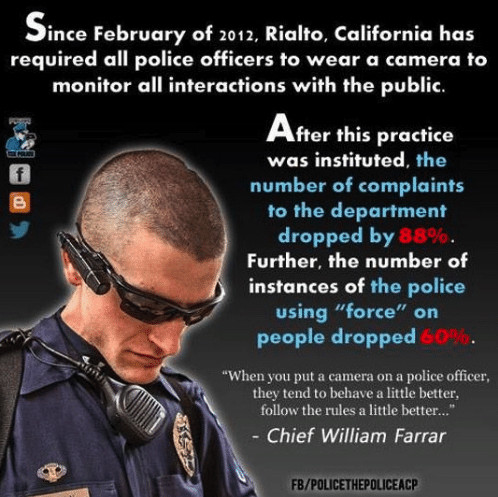
Even Police the Police, a watchdog group, touted the Rialto study. But all is not as straightforward as it may seem, says Ben Brucato: ““Farrar was doubly committed to his hypothesis proving true, both as a researcher and as a publicly accountable police administrator.”
The problems with that study, conducted in Rialto, a small city in California, included that one of three authors, Farrar, was the chief of the Rialto police force, and he “managed both complaint review processes and those officers involved in the study,” has observed Ben Brucato, a postdoctoral fellow at the Center for Humanistic Inquiry at Amherst College, and a particularly incisive observer of modern policing. Such involvement by a police officer in studying his own department was poor social science, Brucato says. It was “especially troubling” because Farrar was wearing two hats. First, he conducted that study because he was enrolled in a university master’s program in criminology; in that role, he was demonstrating his capability to his degree program’s research committee. Second, the department he headed, and studied, had been threatened with shut down over allegations of excessive use of force; city officials had spoken of handing its duties over to the county sheriff’s department. “Farrar was doubly committed to his hypothesis proving true, both as a researcher and as a publicly accountable police administrator,” Brucato wrote.
He also noted: “Farrar was hired as a reformer in a last ditch effort to save the department and the jobs of all the officers and staff who worked there.” The gist of the matter was, as Brucato summed it up, that “a department troubled by a history of questionable use of force—so questionable that it posed an existential threat to it—had to demonstrate reduced use of force and other complaints or face elimination.”
Nonetheless, Brucato wrote, “the cameras are getting all the credit in this study” – it continues to be cited frequently in coverage of body-worn cameras.
Hopefully, Brucato suggested, at least social scientists would take the finding with a grain of salt, because “research on the efficacy of policy aimed at reducing use of force is often equivocal or tentative. Researchers do mostly agree that if policy is effective, it is because of the buy-in of managers, administrators, and officers.”
As for the presumed objectivity of surveillance-film footage, Brucato has argued —for example, in the October 2015 issue of Surveillance & Society — that it can be illusory. He compares the surveillance that police perform on civilians with the surveillance that citizens increasingly are performing on police – in so-called “sousveillance.” In that practice, civilians and activists use cell phones and other small devices to film police interactions with fellow civilians and activists — at demonstrations, for example. The activists can avail of Internet apps that permit instant upload to secure websites, removing the footage from the recording device, if desired — for example, if such recordings are forbidden by state law or just likely to be siezed by police in the field.
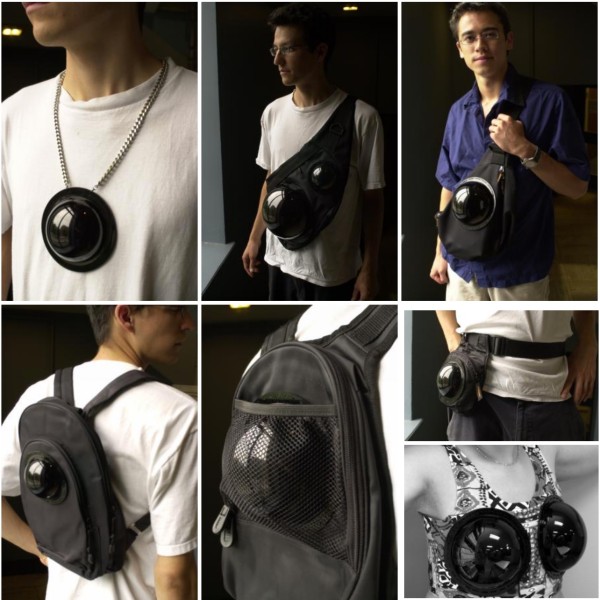
Professor Steve Mann, of the University of Toronto’s Humanistic Intelligence Lab — the “father of the wearable computer” has developed a range of “sousveillance” equipment. Proceeds from their sale (http://wearcam.org/domewear/) help finance study and research at the Lab.
The problem is, says Brucato, that if it comes to a competition between surveillance and sousveillance, the police footage will likely win, so long as various other factors remain in play. He suggests that while “these devices promise accountability by virtue of their mechanical objectivity,” to assume they will reveals what he describes as “an apolitical and ahistorical understanding of police.”
Cameras will “work to more reliably criminalize people of color”; they will “legally and culturally certify police violence used against these same people”; and they will “work to ensure that police maintain their historic role in policing the color line.”
At best, he has argued, “cameras might be a useful tool for political actors to challenge police power, but cameras alone are not the answer.”
Brucato’s perspective has the sort of contrarian plausibility that often attracts ridicule from the righteous.
Previous Post: Online Field Guide to Sponsored Films launches
Next Post: National Film Preservation Foundation Awards 36 Preservation Grants

